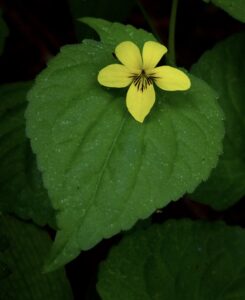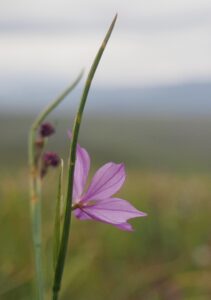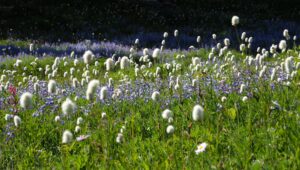
Cascadia is endowed with a wealth of wild flora from its rugged coasts to its alpine heights and arid sagelands. Whether it’s the singular bloom in the deepest woodland shadows or the exuberant explosion of color at the farthest reaches of life on the mountain slopes, wildflowers are everywhere, in nearly every season. They sojourn throughout the landscape each year, arriving and departing almost unnoticed, hidden amongst the ubiquitous greens until the moment they choose to unveil themselves. Not for us do they reveal their masterworks, not at all, but for the lesser creatures they sustain with their nectar, their pollen, and sometimes, their very being in return for the chance to carry on another generation as they have done little changed for millennia. We are the interlopers in their world. They heed us not. And yet, we derive such joy from their presence. Few other species contribute such whimsy to our existence. They are beautiful, and they are curious to us. Curious in the fantastical, flamboyant colors, forms, and patterns each has evolved to suit its survival, like the high-class hats we create when we want to feel fancy. And then there are their scents: sometimes luscious, sometimes nonexistent, and sometimes even repulsive. (Contrast the intense, clove-like fragrance of subalpine spiraea, Spiraea splendens, with the sometimes fetid odor of the otherwise lovely Pacific trillium, Trillium ovatum.) Wildflowers are our imaginations gone wild, yet they have always been wild. They brighten our wilderness excursions by their mere existence — we need only open our senses as we pass them by.

Follow the links on this page to view profiles of individual wildflower species. These profiles are based on personal observation and research and are not meant as botanical authorities. Instead, they approach each featured species casually as the weekend hiker or amateur botanist might, with enough information to make a reasonable identification and, perhaps, spark interest in a more formal exploration or even a lifelong passion. The profiles describe the plants as they are found in Western Washington, although some species span habitats across the continent and even the globe, which may result in differences between the Cascadian specimens and those of the same species elsewhere. (Nature has regional “dialects,” too, just like humans.) Where toxicity or suitability for consumption can be reasonably determined, it is noted, but be sure to do your own research and make your own decision before eating any of those luscious fruits or tender shoots. Check out the more authoritative resources on the “Resources” page of this site under “Identification of Trailside Features” or your favorite field guide or app for more info. Furthermore, many wildflower guides include information on the ethnobotany of given species, as indigenous wisdom has long made use of almost every part of every plant in the environment.

In this section of the site, specific locations where species were found and photographed are not included. While most are quite common throughout Western Washington and beyond, some are endangered or exist in very fragile habitats and could be damaged by too much attention, admiring or otherwise. Learn the rhythms of Nature, venture out with curious eyes, and you, too, will be rewarded with your own discoveries of these fleeting wonders where they choose to reveal themselves.
Comments, alternate IDs, and suggestions for other resources are welcome!
© 2023-2024 Anthony Colburn. Images may not be used or reproduced in any form without express written consent.